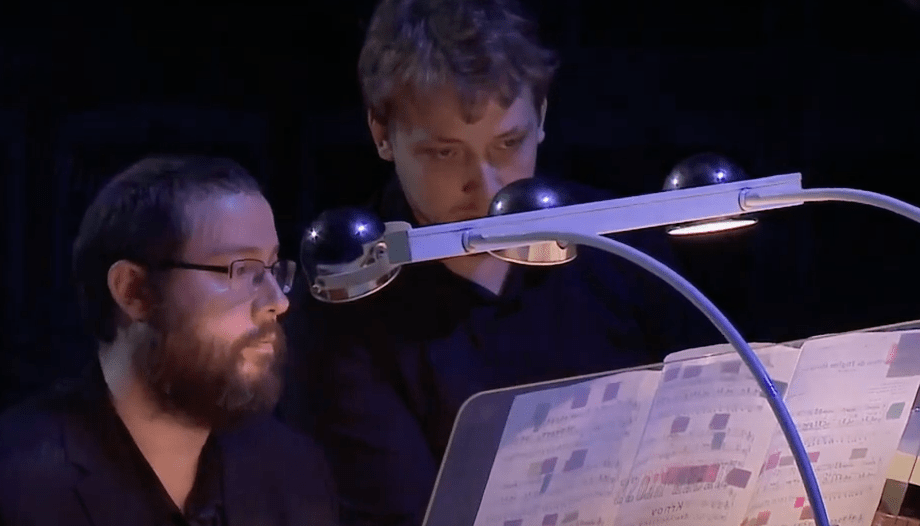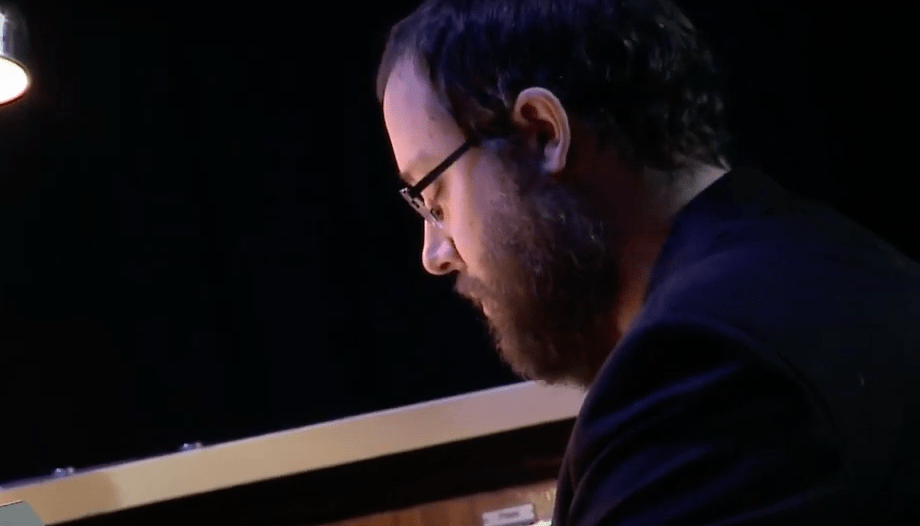Daniel Martín Salvador, musicologist and organist, is one of the first names that come to mind when we think of sacred music. He has given concerts in important international halls. Right now he divides his time between Madrid and Moscow, and has sat down to talk to Omnes about music, liturgy and art.
What is your relationship with sacred music?
- It is not much of a mystery. All organists are related to sacred music. The organ is an instrument which, by its very identity, is fully related to sacred music and liturgy. If I had dedicated myself to another instrument, perhaps I would not have had this relationship, but being an organist it is unthinkable.
The organ is essentially an instrument of the Church and, therefore, the organist needs to know the whole liturgy. That makes you have a very close relationship with all this music, which is not the case with other instruments.
How was the relationship between the Church, music and liturgy born?
- The relationship between music and liturgy has always existed, since time immemorial. Long before Christianity, music was linked first to the instincts, and then to the afterlife, to intangible things.
The first civilizations consider that, in their polytheistic religions, music has an essential role. The Greeks inherited this from the Egyptians; and the Romans from the Greeks. The Jews also had this relationship. Then Christianity was born and, as it spread throughout Europe, it united all those Jewish and mystical traditions spread throughout the Roman Empire.
Music in the Church arose mainly from the chanting of the Jewish psalms. From there, a whole system of liturgical music is created. The most interesting thing is that this liturgy that is created is totally sung. The Second Vatican Council changes the panorama, in the sense that the Masses are now spoken, with moments of music, but in the initial concept, the liturgy was not like that. Initially, absolutely everything was sung. In fact, the Orthodox, who hardly differ from Catholics, continue with the ancient way of celebrating Mass. They sing everything except the homily, which is the only spoken part. All this because, in reality, music and liturgy are born as one.
What can we Catholics learn from the Orthodox liturgical rite?
- What we have to do is to unlearn the things we have learned at the Second Vatican Council. The Orthodox are still doing what we Catholics used to do. Actually, all the music we have today comes from Catholic liturgical music. The chant of the Catholic Church was Gregorian chant, but in Paris in the 12th century, they began to "embellish" Gregorian chant. Thus appeared the first forms of polyphony. These various voices evolved until, in the middle of the Middle Ages, we reach the Renaissance.
In the Renaissance, at the Council of Trent, the Church made a very extensive chapter on the music of the liturgy. From there, a music arises at the same time that is very similar but profane. From that religious music, everything begins to evolve. Madrigals were born, then opera, romanticism, classicism... And the evolution continues.
We cannot learn anything from this orthodox rite because we have evolved so much that we have ended up involuted. Fortunately, in recent times there is a tendency to return to the roots, within the norms of the Council.

The problem is that many people think that the Second Vatican Council eliminated Gregorian chant and the organ, but this is not so. The Second Vatican Council says that the official language of the Catholic Church is Latin, and as for the music, the official one is Gregorian chant. But in the 70's guitars became fashionable and it is very common to introduce songs with guitars in the liturgy, which is a way of "protestantizing" the Catholic liturgy.
We have been struggling, saying that the music comes from the Holy Spirit, but now we are singing Beatles cover songs. This does not fit the liturgy.
Benedict XVI, who has musical studies and is a great connoisseur of the liturgy, surrounded himself with people who were also great composers and liturgists, this helps the people to approach sacred music but preserving the roots. Little by little, the doors are opening to a reform in the liturgy.
Why does sacred music bring us closer to God?
- Because it is a music designed for it. First of all, it is at the service of the Word and this is the most important thing. Music, in a non-mathematical definition, is an expression of feelings. When you are in the Church, the function of music is to help elevate the soul to Heaven, therefore, we can say that the relationship is reversed. It is not a matter of feelings, the Word of God is the Word of God, it does not change like feelings.
Secondly, in art, until the 19th century, everything was done for the greater glory of God. Man is capable of making monumental efforts for the greater glory of God. That helps us to get closer to God. It brings us closer to Him.
Is putting oneself at the service of the Word the most important thing when composing sacred music?
- Yes, it is something that sacred music itself demands. In the General Directory of the Roman Missal it says that music must always reinforce the Word and never distract. Therefore, the first thing a composer has to do when writing music for the liturgy is to have as an objective that the text is understood. The Word has to be the most important thing, it cannot be distorted by the music. Then, when it comes to making the music, the text has to be drawn through the composition. A very clear example of this is the Magnificat of Bach. Bach is a poet-musician, the greatest representative of liturgical music, regardless of the fact that he was a Protestant. The notions of the liturgy were the same and he is an example of how this music should be composed.








